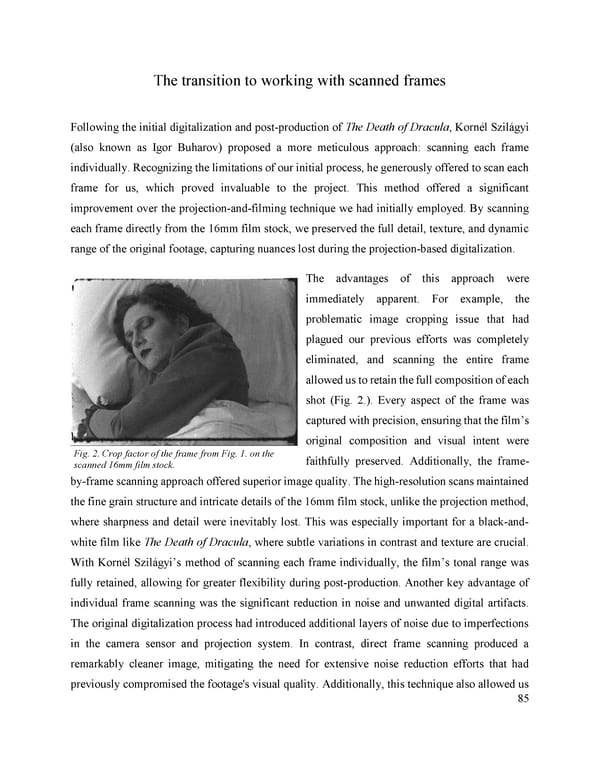The transition to working with scanned frames Following the initial digitalization and post-production of The Death of Dracula, Kornél Szilágyi (also known as Igor Buharov) proposed a more meticulous approach: scanning each frame individually. Recognizing the limitations of our initial process, he generously offered to scan each frame for us, which proved invaluable to the project. This method offered a significant improvement over the projection-and-filming technique we had initially employed. By scanning each frame directly from the 16mm film stock, we preserved the full detail, texture, and dynamic range of the original footage, capturing nuances lost during the projection-based digitalization. The advantages of this approach were immediately apparent. For example, the problematic image cropping issue that had plagued our previous efforts was completely eliminated, and scanning the entire frame allowed us to retain the full composition of each shot (Fig. 2.). Every aspect of the frame was captured with precision, ensuring that the film’s original composition and visual intent were Fig. 2. Crop factor of the frame from Fig. 1. on the faithfully preserved. Additionally, the frame- scanned 16mm film stock. by-frame scanning approach offered superior image quality. The high-resolution scans maintained the fine grain structure and intricate details of the 16mm film stock, unlike the projection method, where sharpness and detail were inevitably lost. This was especially important for a black-and- white film like The Death of Dracula, where subtle variations in contrast and texture are crucial. With Kornél Szilágyi’s method of scanning each frame individually, the film’s tonal range was fully retained, allowing for greater flexibility during post-production. Another key advantage of individual frame scanning was the significant reduction in noise and unwanted digital artifacts. The original digitalization process had introduced additional layers of noise due to imperfections in the camera sensor and projection system. In contrast, direct frame scanning produced a remarkably cleaner image, mitigating the need for extensive noise reduction efforts that had previously compromised the footage's visual quality. Additionally, this technique also allowed us 85
 Lost Analogue: Exploring Film, Music, and Interdisciplinary Methods in Education Page 85 Page 87
Lost Analogue: Exploring Film, Music, and Interdisciplinary Methods in Education Page 85 Page 87